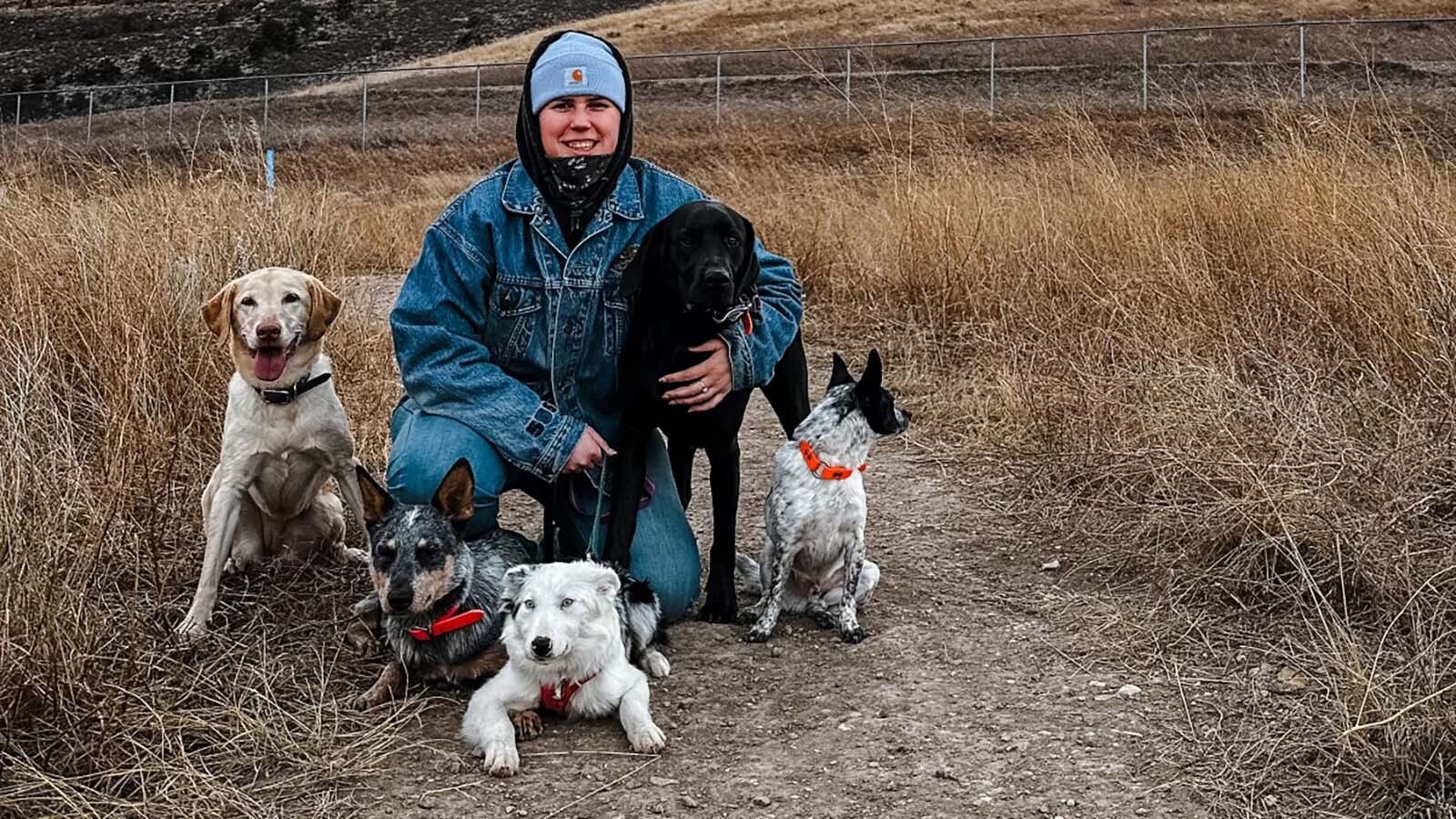Another Wyoming dinosaur is expected to fetch big bucks in an international auction.
“Barry,” a complete Camptosaurus, is being auctioned by the Drorot auction house in Paris. The fossils were excavated somewhere in Crook County during the 1990s and its named for Barry James, the man who began restoring the fossilized bones.
The specimen is 6.9 feet tall and 16.4 feet long and boasts a 90% complete skull and 80% of the rest of its skeleton. It could fetch as much as $1.2 million at auction.
Common, Complete And Crucial
Camptosaurus was a medium-sized dinosaur that lived in North America throughout the Late Jurassic Period roughly 150-146 million years ago. It browsed prehistoric plants alongside more famous dinos like Brontosaurus, Stegosaurus and Diplodocus.
In the grand scheme of Cowboy State fossil hunting, Barry is “a reasonably common dinosaur,” said ReBecca Hunt-Foster, a paleontologist at Dinosaur National Monument in Utah. “We’d always like to have more.”
Even though the thousands of bones found at Dinosaur National Monument are from the same period as Camptosaurus, the Late Jurassic, they aren’t as plentiful compared to other dinosaurs found there. Some of the best specimens of this dinosaur have come from Wyoming excavations.
The first Camptosaurus fossils were discovered in Albany County in 1879, but the dinosaur wasn’t scientifically named until 1885.
On the surface, Camptosaurus might not seem as exciting as its contemporaries. It doesn’t boast enormous size, has no menacing spikes or horns, and no razor-sharp teeth in its jaws.
Because of this, Camptosaurus hasn’t had the same kind of scientific attention as other Jurassic dinosaurs. That doesn’t make the Barry specimen any less impressive or important.
“Every skeleton is valuable scientifically,” Hunt-Foster said. “Having a high sample size is always better than a lower number of specimens available for study. Every one can tell us something.”
It’s Museum-Worthy
Nearly every paleontologist would say a specimen of this quality belongs in a museum where it can be publicly accessible for scientific research. Complete skeletons are even more valuable since all the fossils come from a single individual.
“Complete skeletons help us better understand how animals may be slightly different from each other, how they grow and change over time, and differences in the skeletal anatomy,” Hunt-Foster said. “Keep in mind most of the dinosaurs we find are not 100% complete. Having as many skeletal elements as possible is always really advantageous.”
With a 90% complete skull and 80% complete body, Barry the Camptosaurus could be an amazing specimen to study, if the numbers add up. Hunter-Foster hasn’t seen the fossils firsthand, but she (like most paleontologists) is skeptical of claims of completeness, especially if it’s part of a specimen’s sales pitch.
“I know sometimes someone will say it's 80% complete, but it might be 80% of fragments that have been reconstructed,” she said.
If it is that complete, fossils from Barry could tell paleontologists the dinosaur’s age, whether it suffered from any diseases during its life, and if it died from an attack or injury from another dinosaur.
Dino Dollars
A Camptosaurus skeleton that commands a $1 million price tag sets a bad precedent in the eyes of paleontologists.
Museums don’t have millions of dollars to buy single dinosaur skeletons at auction, unlike a wealthy collector who might buy the skeleton and then place it in a home or somewhere else where it’s inaccessible to scientists and the public.
At Dinosaur National Monument, dinosaur fossils are preserved in the rock exactly where they were found. At her job, Hunt-Foster experiences the growing value of “dino-tourism” and how much economic benefit there can be from keeping dinosaurs and other fossils where they were found.
“People love to come see fossils where they were found,” she said. “There’s quite a dinosaur tourism boom going on where people are purposely traveling to dinosaur destinations to see specimens. Keeping (fossils) locally can really be an economic boost to an area.”
"Barry" could end up in a museum or in someone’s living room. It’s possible the dinosaur’s ultimate destination will never be known once it's sold, but it's unlikely it will return to its original stomping grounds in Wyoming.
The auction of Barry, the Wyoming Camptosaurus, is scheduled for Oct. 20.
Andrew Rossi can be reached at arossi@cowboystatedaily.com.





